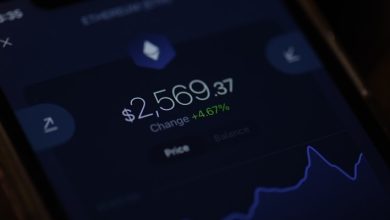How to Use Technical Analysis to Time Your Crypto Trades

- Understanding the basics of technical analysis in crypto trading
- Identifying key indicators for successful timing of crypto trades
- Utilizing chart patterns to predict price movements in the crypto market
- Implementing support and resistance levels in your trading strategy
- Using moving averages to enhance your timing of crypto trades
- Avoiding common pitfalls when applying technical analysis to crypto trading
Understanding the basics of technical analysis in crypto trading
When it comes to crypto trading, understanding the basics of technical analysis is essential for making informed decisions. Technical analysis involves studying historical price data and volume to predict future price movements. By analyzing charts and identifying patterns, traders can gain insight into market trends and potential entry or exit points.
One of the key concepts in technical analysis is support and resistance levels. Support represents a price level where a cryptocurrency tends to stop falling and bounce back, while resistance is a level where it tends to stop rising. By identifying these levels on a chart, traders can make more strategic decisions about when to buy or sell.
Another important aspect of technical analysis is trend analysis. Traders look for patterns in price movements, such as uptrends, downtrends, and sideways trends. By understanding the direction of the trend, traders can determine whether to go long (buy) or short (sell) a cryptocurrency.
Additionally, technical analysis involves using indicators and oscillators to confirm trends and identify potential entry or exit points. Popular indicators include moving averages, Relative Strength Index (RSI), and MACD. These tools help traders gauge the strength of a trend and make more informed trading decisions.
Identifying key indicators for successful timing of crypto trades
When it comes to timing your crypto trades using technical analysis, identifying key indicators is essential for success. These indicators can help you make informed decisions about when to buy or sell a particular cryptocurrency. By paying attention to these signals, you can increase your chances of making profitable trades in the volatile crypto market.
Some of the key indicators to consider include moving averages, relative strength index (RSI), MACD, and Bollinger Bands. Moving averages can help you identify trends in the price of a cryptocurrency, while RSI and MACD can indicate whether a particular asset is overbought or oversold. Bollinger Bands can help you determine the volatility of a cryptocurrency, which can be useful for timing your trades effectively.
It’s important to remember that no single indicator can guarantee success in crypto trading. Instead, it’s essential to use a combination of these indicators to make well-informed decisions. By analyzing these key indicators and understanding how they interact with each other, you can improve your timing of crypto trades and increase your chances of profitability in the market.
Utilizing chart patterns to predict price movements in the crypto market
One of the most popular methods of technical analysis in the crypto market is utilizing chart patterns to predict price movements. Chart patterns are formations that appear on price charts and can help traders identify potential trend reversals or continuations.
There are several common chart patterns that traders use to analyze price movements in the crypto market. These patterns include head and shoulders, double tops and bottoms, triangles, flags, and pennants. By recognizing these patterns on a price chart, traders can make more informed decisions about when to enter or exit a trade.
For example, a head and shoulders pattern consists of three peaks, with the middle peak (the head) being higher than the other two (the shoulders). This pattern is typically seen as a reversal pattern, signaling a potential trend change from bullish to bearish or vice versa.
On the other hand, a triangle pattern forms when the price is consolidating within a tightening range, creating higher lows and lower highs. Traders often view this pattern as a continuation pattern, suggesting that the previous trend is likely to resume once the price breaks out of the triangle formation.
By learning how to identify and interpret these chart patterns, traders can gain valuable insights into the potential future direction of prices in the crypto market. However, it’s important to remember that chart patterns are not foolproof indicators and should be used in conjunction with other forms of analysis to make well-informed trading decisions.
Implementing support and resistance levels in your trading strategy
When implementing support and resistance levels in your trading strategy, it is essential to understand their significance in technical analysis. Support and resistance levels are key price levels where a cryptocurrency often reverses its direction. Support levels act as a floor for the price, preventing it from falling further, while resistance levels act as a ceiling, preventing the price from rising higher. By identifying these levels, traders can make more informed decisions about when to enter or exit a trade.
One way to identify support and resistance levels is by looking at historical price data. Traders can analyze previous price movements to identify levels where the price has repeatedly reversed in the past. These levels can then be used as reference points for future trades. Additionally, traders can use technical indicators such as moving averages, Fibonacci retracement levels, and trendlines to confirm support and resistance levels.
When incorporating support and resistance levels into your trading strategy, it is important to consider other factors as well. For example, traders should look for confluence, where multiple indicators align to confirm a support or resistance level. Traders should also be aware of potential false breakouts, where the price temporarily moves beyond a support or resistance level before reversing course.
Overall, by incorporating support and resistance levels into your trading strategy, you can improve your ability to time your crypto trades effectively. These levels provide valuable insights into market dynamics and can help you make more informed decisions when buying or selling cryptocurrencies. Remember to use a combination of technical analysis tools and indicators to confirm support and resistance levels and enhance the accuracy of your trades.
Using moving averages to enhance your timing of crypto trades
One effective strategy for timing your crypto trades is to utilize moving averages. Moving averages are technical indicators that smooth out price data to identify trends over a specific period of time. By using moving averages, traders can enhance their timing by pinpointing optimal entry and exit points for their trades.
There are different types of moving averages that traders can use, such as simple moving averages (SMA) and exponential moving averages (EMA). SMA calculates the average price over a specific number of periods, while EMA gives more weight to recent prices. Both can be valuable tools for identifying trends and potential reversal points in the crypto market.
When using moving averages to enhance your timing of crypto trades, it is essential to pay attention to crossovers. A crossover occurs when a shorter-term moving average crosses above or below a longer-term moving average. This can signal a potential shift in the market trend and provide an opportunity for traders to enter or exit a position.
Additionally, traders can use moving averages to set stop-loss orders and take-profit targets. By placing stop-loss orders below key moving averages, traders can limit their losses in case the market moves against them. On the other hand, setting take-profit targets above moving averages can help traders lock in profits when the market is in their favor.
Avoiding common pitfalls when applying technical analysis to crypto trading
When applying technical analysis to crypto trading, it is important to be aware of common pitfalls that can negatively impact your trading decisions. By avoiding these pitfalls, you can increase the accuracy of your analysis and make more informed trading choices.
- One common pitfall to avoid is relying too heavily on a single indicator. While indicators can provide valuable insights, using multiple indicators can give you a more comprehensive view of the market.
- Another pitfall is ignoring the bigger picture. It is essential to consider factors such as market trends, news events, and overall market sentiment when analyzing crypto trades.
- Overtrading is a common mistake that can lead to losses. It is important to be patient and only make trades when you have a clear signal based on your analysis.
- Ignoring risk management is another pitfall to avoid. It is crucial to set stop-loss orders and manage your risk appropriately to protect your capital.
- Lastly, falling victim to confirmation bias can cloud your judgment. It is essential to remain objective and consider all possible outcomes when analyzing crypto trades.



